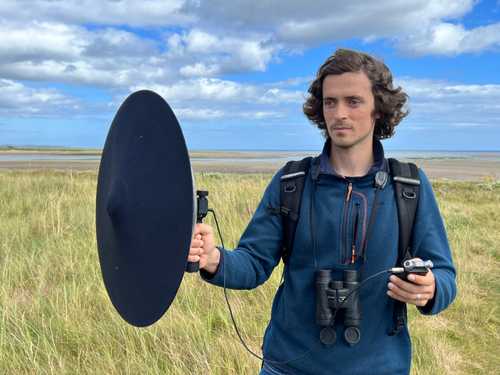
Seán Ronayne, ornithologist: Sound-recording every bird in Ireland
Seán Ronayne inherited his life-long love of birds from his father and grandfather. One of his first memories involves being taken to a nature reserve in his home town of Cobh, Ireland, where he would try to guess his father’s imitations of the sounds made by different birds and animals.
Later, Seán obtained a degree in zoology and a masters in marine biology. However, not wanting to be at sea for long periods, he instead made ecological impact assessments of birds and mammals, and habitat assessment surveys for proposed developments. Currently freelancing as an ecologist, ornithologist, activist, and founder of Irish Wildlife Sounds, he is pursuing sound recording full-time.
Here, Seán speaks to earth.fm curator Melissa Pons about his passion for recording Ireland’s wildlife, and much more. The following has been edited for clarity. Listen to the full audio interview – soon be released as an episode of the Wind Is the Original Radio podcast – to hear about Seán’s most exciting field recording experience (which involves a wallcreeper and hiking down Pyrenean scree), recording at night in Spain’s Ebro Delta, a starling with a Cork accent, and an upcoming documentary featuring Irish wildlife. Enjoy!
Birds don’t just sit on top of a tree and sing a beautiful song. There’s a whole lot more going on there that we don’t comprehend. But if you’re willing to dig a little deeper and listen, really listen, there’s just so much that you can learn.
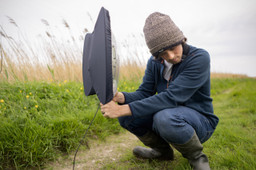
What are the most profound changes that have occurred in the natural world since your childhood?
It’s an interesting question, but it’s also difficult to answer, because my outlook on my surroundings now is very different to what it was when I was younger. And it might be a strange thing to say, but I almost wish I didn’t know what I know now about the destruction and loss that’s happening in Ireland.
Ireland is probably one of the worst, if not the worst country in all of Europe in terms of biodiversity loss. And that’s down to a number of things, including over-intensification of agriculture and massive deforestation. When I was younger, I wasn’t so aware of that. What I was seeing around me, to me, was normal. Looking back now, even in my 30-odd years, there’s been such an increase in traffic on major roads. And escaping the noise of that is very difficult. Having a noise-free environment, in terms of man-made noise, in combination with healthy habitats where there is high sonic diversity, is extremely difficult to achieve. When I was brought to the nature reserve as a very young child, I remember it being quite peaceful, quite quiet. But now the road there is very busy and it’s actually quite dangerous to walk along.
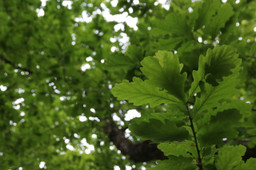
We’ve also lost a few species in Ireland over the last few decades. I think the most recent species which became extinct, just within my time, was a bird species called the corn bunting. Such a lovely sound. Someone described this to me as sounding like jangling keys. And we lost it. It’s now extinct. There was a population that was clinging on. It was either the late ’80s or the early ’90s.
There’s a lot of species like that that are red-listed. We have, like, a traffic light system: the population status of a species goes from a healthy population, green, all the way up to red for endangered or at risk of extinction. Off the top of my head, 26% of our birds are red-listed.
Younger generations don’t know what our landscapes ‘should’ look like. Someone who is used to monocultures, imported tree species, regularly seeing or hearing invasive animals, or who even appreciates the aesthetics of a barren landscape, may be oblivious to how it used to be. What can we do about this loss of memory?
There’s a number of ways to address that. I think it has to be done from a young age. At school, we had something really simple which had such an impact on me: the Nature Table. It was just a simple wooden table, but we were encouraged to explore and discover, and if we found something of interest, we’d bring it in, we’d discuss it and we’d learn that way, directly through an actual physical piece of nature. From what I’ve heard, that practice is disappearing. So there definitely needs to be education.
When you have a connection with and an understanding of something, you care more about it, and then you’re more prone to want to do something about it. And one other good way of doing this is recording. I am trying to record any remaining, intact fragments of healthy habitat and share that with people and let them know, ‘Listen, this is what a healthy habitat sounds like.’
And make them realize that this silence or semi-silence, which they think is normal, is far from normal. There is a term for it: shifting baseline syndrome. If for some reason the color of the sun suddenly changes to green and a new generation is born, to them, this is normal. That’s why I think it’s important to document things and share things. So there is a checkpoint you can go back to and say, wait a minute, ‘Look at this. This was recorded 20 years ago. Listen to the diversity of birdsong in this soundscape compared to what we’re hearing now. This is missing. That is missing. Oh my God.’ And it can trigger some kind of response from people.
Without contextualization, meaning can become lost, or you could paint a false picture. By releasing, say, your recordings of rare patches of ancient Irish woodland, while also communicating the broader circumstances of what is happening there, this context could bring understanding to different generations.
That’s a thing. A lot of people here in Ireland, if you mention that a species is at risk of extinction, they say, ‘Oh, really? I haven’t even heard of it.’ It’s not their fault, it’s just that the connection is missing. I think when you bridge that gap, most people are going to fall in love with nature and what it represents. And I think even something as simple as teaching kids how to identify birds visually and via sound would be very appealing to them, and would foster a lot of interest as they grow up.
In school, one teacher who was very passionate about nature really made a big effort. He had a scheme where classes built nest boxes together and then went out and installed them in different places. He’d take them out on nature walks and teach them the different sounds of the birds. The school had a collaboration with the national radio; they would come out every year for a dawn chorus event and it would be broadcast live. And I think two or three kids were chosen to go along and take part in this event which was broadcast all over the country. And it still is, every year, from this nature reserve – which, come to think of it, would be a very interesting record: you could compare the soundscape through the years.
There’s at least one species which is new to that soundscape, a species which has been expanding in Ireland and throughout Europe: the Eurasian reed warbler. And I think cuckoo is in serious decline in Ireland now, partly because its preferred host species, the meadow pipit, is now red-listed and is in a big decline in Ireland. So that’s a species which is now missing from that soundscape.
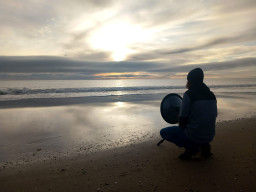
Obviously, this isn’t just limited to bird sounds. There’s another very interesting sound, which I think is now lost, at least in a local context. Cobh, where I grew up, is on Great Island, in the middle of Cork Harbor, the second biggest natural harbor in the world after Sydney. It’s a big fishing port. In the summer, mackerel shoals would follow shoals of sprat – a small bait fish – into the harbor. And they would actually herd these fish, for want of a better word, into a tight baitball, then, all of a sudden, the mackerel would start jumping and breaking on the water. And it was such a sound. So you could have thousands of these mackerel breaking and splashing on the water, and you could hear it all around the harbor. My father lived on the seafront, on the third floor of a house overlooking the whole harbor. And he said, growing up in the ’60s and ’70s, that these mackerel breaks were so extensive that they’d span kilometers across the harbor at once, and you would hear it for so far.
This doesn’t happen anymore, because they’re being overfished; they’re being targeted by big trawlers offshore. Super trawlers like factories that suck everything up. There’s three operating off the coast of Ireland at the moment. Some trawlers drag nets, like dredging. In Ireland, we have cold water and coral reefs, and I think a lot of those have been hammered this way. Sometimes you look at the sea and you think, ‘Wow, at least there’s one part of the world that hasn’t been affected by man.’ But you’re only seeing the surface, not what’s underneath.
This speaks again to extinctions and that we are so visually orientated. I remember reading about selective logging in The Great Animal Orchestra by Bernie Krauss: if I remember correctly, after taking the trees down, to the untrained eye there was no staggering difference. But the decline of biophony just one year later was really shocking.
There’s so many dynamics in these ecosystems that we can’t fully comprehend. A friend suggested: could it be that when they remove trees, it opens the woodland up and allows more predators to gain access?
Here in Ireland, we’re down to less than 1% native woodland, which is crazy. Before there was any real influence from men, I think we had 80% tree cover; we were a forest nation. To bring that down to less than 1%, it’s amazing. In the Irish language, the letters are derived from different words used for different species of tree, so it’s ingrained in us as a society, but the connection has been lost.
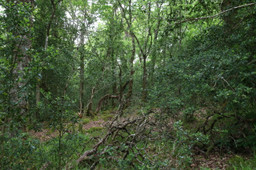
The majority of our trees are tied up in farmers’ boundaries. And there are very, very small pockets, very fragmented. And they have big problems as well, like a lot of them are overgrazed. There’s a lot of sika deer, which is an invasive species, and because we have no top predators – no wolves, no bears – we’ve nothing to control them. So there’s vast numbers of deer and sometimes even livestock like sheep and cattle roaming these woodlands and grazing the understory. A lot of species will be missing from these woodlands as a result.
In Ireland we have more cows and sheep than people; farming is a big player here. Sixty to 70% of the land cover is dedicated to cow farming, which was the biggest problem in this country, apart from afforestation of non-native trees like Sitka spruce, a Pacific American species. They plant them in really dense rows so there’s no light and the under canopy doesn’t exist. And they’re highly acidic. It’s basically a monoculture dead zone. Nothing else grows there. And 11% of the landscape is covered in this conifer monoculture. And they try to sell this as forest when it’s really just another form of farming.
It’s not the fault of the people, it’s just that the connection is missing. I think when you bridge that gap, most people are going to fall in love with nature and what it represents.
Another issue is that there are uplands known as commonages. No one person owns them. A number of farmers have a claim to them. And because it’s not really fertile land for cows or for growing crops, they put sheep up there because they are really tough and can eat just the vegetation there and survive in the really wet conditions. But they eat everything; that’s why the mountains are bald: the trees were cut down and can’t grow back because the sheep eat them. And there’s just so many of them.
And the other thing that they do there, the farmers – it’s totally illegal but it happens every year – they put fuel everywhere and light the whole thing on fire. So you have massive mountain fires all over the country. It kills the grass but the ash fertilizes the soil and encourages new, fresh growth of grass which is very nutritious grass for the sheep to eat. So it’s a sheep-based ecosystem; everything else dies. Anything that tries to nest in the ground dies and is burnt.

I don’t think people realize how bad it is, but this happens every year in the same places. You know who owns the land. Nobody’s prosecuted. Agriculture is king here, and what they want happens. If someone else was setting illegal fires they’d be arrested and go to prison. But in the agricultural world in Ireland, this is an everyday occurrence.
Another issue that we have here is special areas of protection covered by European legislation. SPAs are special protection areas designated for birds, and SACs, special areas of conservation, are designated for habitats and mammals. But the ironic part is that hunting is allowed there. How can you designate something as a special protection area for birds and then allow people to come in and shoot the birds? And because there’s very little habitat in Ireland, when you do have one, everything wants to go in there. So it’s attracting the birds in to be killed by hunters. It doesn’t make sense. But speaking about it and speaking about it publicly and to a wider audience is important. And it’s one of the ways to move forward, because a lot of people don’t realize this. But the statistics don’t lie: Ireland is very extreme in terms of what we’ve lost.
I talked to some friends who said they picture Ireland as a very green country, so when you started to tell me the reality, I was really surprised.
This green image is sold to tourists. It’s unfair in a sense because the lush, verdant landscapes that they sell in the tourist advertisements are mostly perennial ryegrass. I don’t know the exact statistics, but between 60 and 70% of all of our land is covered by improved agricultural grassland: highly intensified grassland, essentially for feeding cows. That’s what the green represents.
When things are green, there’s a natural tendency to associate it with health, sustainability, and productiveness.
It’s the context – the context of the green, in this case. But there is change on the horizon. Social media is helping things a lot. A lot of knowledgeable and powerful people are speaking out against it now. Social media is a really powerful tool in the right circumstances. It’s opening people’s eyes, and the more people that are aware of what’s happening and are against it, the more chance we have of making our land a better place ecologically.
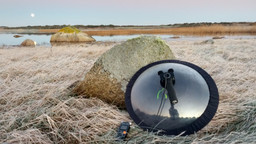
And it’s not just an ecological benefit, as mental health benefits come from an improved ecological landscape, too. Even people who wouldn’t consider themselves to be massive nature enthusiasts, where do they go on the weekends? They go to the nearest woodland or beach for a walk.
People seek out nature, whether they realize it or not. And we need nature, every one of us. Separating ourselves, so there’s us and there’s nature? There is no separation. We are a part of nature, and humans, as a species – I don’t know how to say this in a nice way – humans as a species need to drop the superiority complex.
When you record a dawn chorus, for example, and share it on social media or with your friends and family, do you feel you are telling a story with it?
When I post something on Twitter, I’m excited to share it because I want other people to hear the beauty that I get so excited about.
Sometimes people will say, ‘Oh wow, that’s so amazing.’ And the automatic response is, ‘Thank you’ – but I can’t say that, because I haven’t done anything. I’m stealing the limelight from the artists. The true beauty comes from the birds and whatever they’re singing. I’m not singing in the dawn chorus. So I’m sharing something beautiful that I think other people will think is beautiful but maybe haven’t heard before for whatever reason. Or maybe they have heard it but are so used to walking past it and not listening that they’ve not actually appreciated it.
When I share something, maybe I convert someone into listening a little more deeply and paying more attention to what’s going on around there. Because, again, if you appreciate something and have a connection with it, you’re more inclined to want to protect it. That’s why I think it’s important to reach out to people and connect with them and send them these beautiful sounds.

How should we position ourselves when it comes to being pessimistic or optimistic? Can we adopt both?
Absolutely. It’s okay to complain, and you need to do that, but also you need to get up and do something about it. Whatever you can within your capacity. The most important thing is an awareness of our footprint, and to at least acknowledge the things that we do and be conscious of them. Try your best to improve your ways and reach out to people and try to make a bigger impression, if possible.
What changes have you noticed since you started to make nature field recordings of birds?
Since I started sound recording, I’ve listened much more intensively and I’m also much more acutely aware of anthropogenic sound, which used to go over my head. Anthropogenic noise is so prominent in the modern-day soundscape that we learn to filter it. But when you’re sound-recording, that filter is gone because you’re always looking for places where you don’t have that noise. I’ve never heard so many planes, trains and cars since I started sound recording.
People sometimes focus on learning about just one species, but it seems to lead them to connect to the bigger picture.
It goes back to ‘them and us’. People have been conditioned to think that the world revolves around humans. There’s ‘us’, a separate entity, and then there’s everything else: nature. That’s ‘them’.

But when you really listen to a bird, for example, you try to understand what it’s saying. That makes you look at them differently and makes you realize that they’re not so different from us. They have the same needs, and the same forms of conversation as us, just in a different language.
A really interesting way of going deeper into the language of birds is to listen to mimicry. It’s a very niche thing. I’ve spent a lot of time recording birds to document and decipher mimicry, but, ‘Why am I doing this?’ I really enjoy it and I’m fascinated by it. But, ‘What have you achieved when you translate this mimicry of a given bird?’ I feel more connected to the species and I understand it more and the realization that birds are capable of complex and unique behavior, just like humans, is a fascinating insight.
Recently, I was walking my dog in a woodland near where I live and all of a sudden he disturbed a jay, a colorful member of the crow family. And it went up from the ground into the canopy.
Next, I heard a barking dog ahead of me, so I went to put my dog back on the lead. But I realized that the barking wasn’t coming from ahead of me. It was coming from above me. I looked up and it was the jay, barking like a dog at my dog, aggressively, bobbing up and down. I had my phone with me and I recorded it.
I even started to question myself afterwards. I researched it and they’re not the most famous of mimics, but jays are known to be mimics. One of the most common species that they mimic is buzzard, a really common raptor in Ireland. Are they mimicking the buzzard in response to a buzzard, to alert other jays to a specific predator so they know how to react? Different predators hunt in different manners and so they might need to escape in a different way to avoid being caught. I always thought that that made a lot of sense because jay and buzzard occur in the same habitat, deciduous woodland typically, that would be their most common predator.
There was an example in the literature also in relation to tawny owls, where there was context-dependent mimicry of that species by jays. A recordist in the woodland, I think he must have been surveying tawny owl, so he was playing tawny owl song hoping to get a response back. But what happened was that a jay started mimicking a tawny owl. People theorize that the jays are responding with the sound of that predator in the hope that the predator will be scared off. Do you know what the implications of this are? So amazing, if you think about it. First of all, the jay recognizes the dog as a species and knows what this species sounds like.
All of these species live much more complicated and intricate lives than we give them credit for. So listening deeply and listening to mimicry can open up so many possibilities, and can teach you so much about the lives of these species.
We rate other species’ intelligence on our own standards or our own ideas of what intelligence is. But there’s just so much going on that we can’t comprehend.
Can you talk about the documentary that you’ve been involved with?
After moving back from Catalonia, I was a little bit disheartened because there’s so much more diversity over there. I came back to Ireland and things aren’t so good. So I thought, ‘Gosh, how am I going to maintain my enthusiasm?’ But, for things to change, you need to be positive and try to make change. So literally the first days after arriving back in Ireland, after being away for three years, I’m going to go on a mission and sound-record all of Ireland’s birds, and I’m going to share these sounds with people and try to make them fall in love with the sounds of the birds that we are potentially losing – not necessarily through our own actions, but sometimes through our own inaction or lack of understanding or awareness of what’s happening.
I started sharing and people were really responsive and really enjoyed these bird sounds, even though I thought the people didn’t care. The more I did this, the more I realized people do care and I’m sure would be so happy for a change to occur for the better.
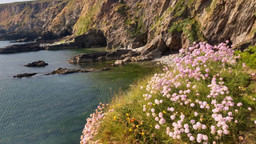
That really gave me the enthusiasm to pursue this. So things really took off: I built the website and started recording manically, putting recorders everywhere. I had recorders hidden all over the country, and still do. I have two recorders that monitor constantly, really nice locations, and I take 256 GB every six weeks from each one.
So there was a combination of that and working manually, then with parabola, and, as time went on, I tried different techniques and got some more equipment and it started to get a lot of attention. I started to get people from the media contacting me. To be honest, I was scared because I had never really spoken in the media. I’m kind of a shy person; I’m talking a lot now because this is a topic that I’m passionate about. But, to go on media is a brilliant chance to raise awareness of everything and share these sounds with people and make them react and hopefully help make a change. So I did it, and actually I found out that it wasn’t so bad because I was talking about something that I loved and it was something that I understood.
Eventually I was asked if I would make a video, a short documentary for The Irish Times, a really big newspaper here. The lady who recorded it, Kathleen Harris, is an amazing cinematographer and she made this really, really beautiful little piece. And it was so well-received that it ended up being one of the most viewed videos on The Irish Times. It had such a nice reception that she ended up asking if I would like to do something bigger, because she could see that there was a lot of love for these sounds, a lot to talk about, and that there was a lot of awareness to raise in a country where things are kind of at the bottom. And here we are: we got the funding.
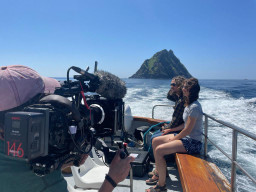
It essentially follows me and what I do, my manic recording. I think I’ve recorded 192 species in Ireland. Accounting for all of the regularly occurring species in Ireland, that’s what I want to do. And I want to create something where everything is accessible, like a guide; you always have bird guides with pictures or drawings, but with very little emphasis on sound. So I thought, wouldn’t it be really nice to make an audio guide of Ireland’s birds with recordings that were only recorded in the country? Almost an homage to the birds of Ireland. To reach that goal, there’s only three species remaining, but they are all really rare: they’re at the very edge of their natural range, or they’re nearly extinct because of harmful practices, or they’re species that are not necessarily rare but are really silent and difficult to access. And generally, for these species, you need to be very careful. They’re sensitive and you need to apply for licenses, you need to go about things the right way because they’re in danger of extinction.
This is what the documentary is about. We’ll be discussing the not-so-nice side of things and the issues that birds are facing and the reasons why species are declining, and general sonic diversity loss and its broader implications and what we can do to help that.
I’m really, really excited about it. People are very visual, so to have a visual like this and the sound to go with it, it’s a very direct, grabby way of reaching out to people.
I’ve been thinking about different things that I can do, too. For me to make an album, it’s something very different. It’s going to be a learning process, but what I want to do is go to the last healthy little fragments of habitat that we have left in areas where there’s no road noise, record these in long form and make an album of this and share it to people. The beautiful fragments that we still have left and can expand and recover if we act together.
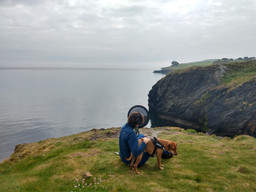
I want to have the album ready on the day that the film is released on television, so that they can come together. I want to make a difference somehow. Speaking about it and raising awareness is one. So that’s the plan.
I guess the more novel and unusual discoveries you can make through sound, the more likely you are to attract more people to sound and, consequently, the environmental issues that are happening.
All photos courtesy of Seán Ronayne
Earth.fm is a completely free streaming service of 1000+ nature sounds from around the world, offering natural soundscapes and guided meditations for people who wish to listen to nature, relax, and become more connected. Launched in 2022, Earth.fm is a non-profit and a 1% for the Planet Environmental Partner.
Check out our recordings of nature ambience from sound recordists and artists spanning the globe, our thematic playlists of immersive soundscapes and our Wind Is the Original Radio podcast.
You can join the Earth.fm family by signing up for our newsletter of weekly inspiration for your precious ears, or become a member to enjoy the extra Earth.fm features and goodies and support us on our mission.
Subscription fees contribute to growing our library of authentic nature sounds, research into topics like noise pollution and the connection between nature and mental wellbeing, as well as funding grants that support emerging nature sound recordists from underprivileged communities.
